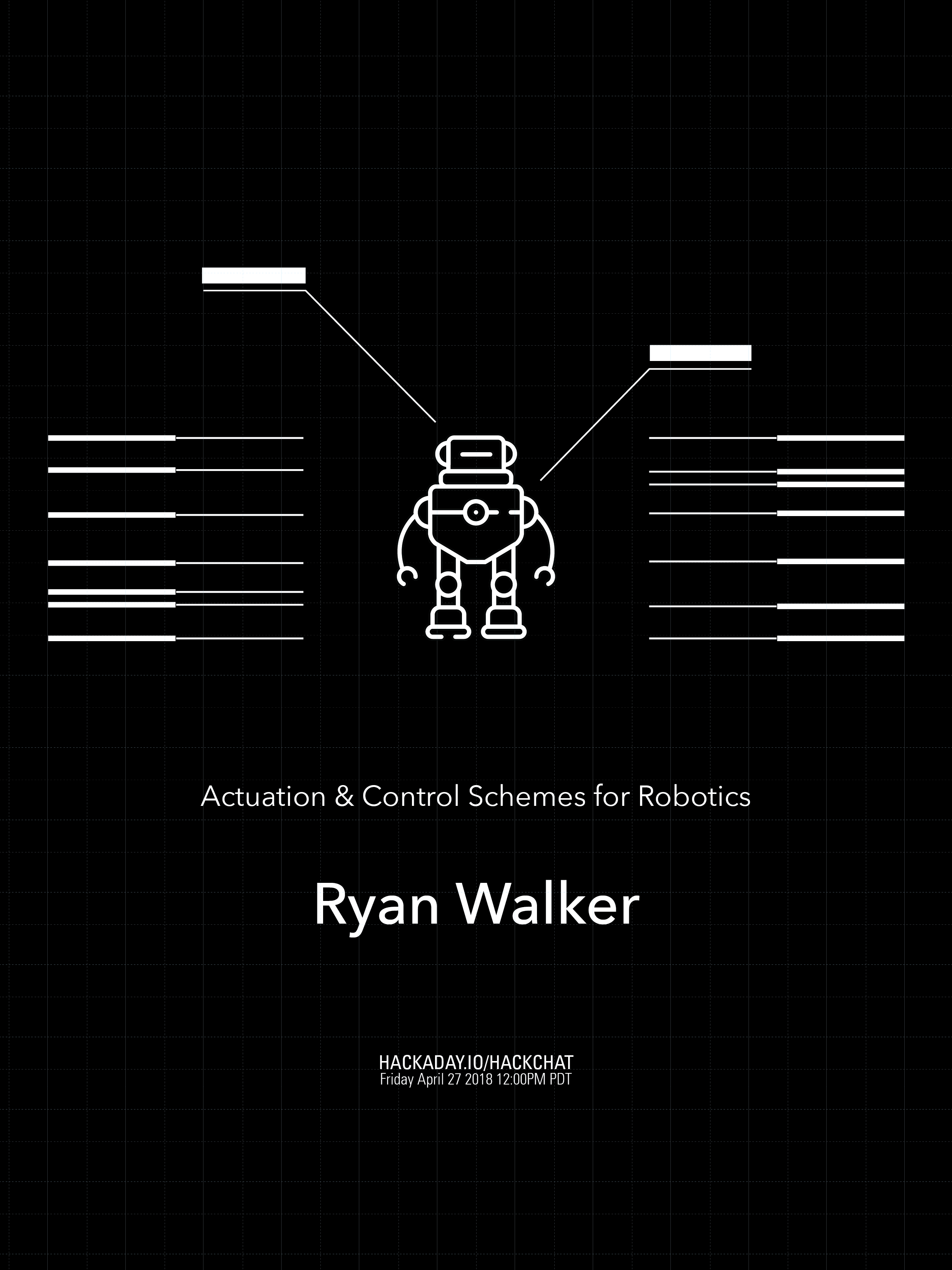Join this Hack Chat by clicking on the JOIN HACK CHAT button.
______________________________________________________________________________
Ryan Walker will be hosting this Hack Chat.
This Hack Chat is at noon Pacific time on Friday, April 27th.
Time Zones got you down? Here's a handy count down timer!
We wanted to kick the Hackaday Prize Robotics Module Challenge off with a robotics Hack Chat!
Interested in how people will use new and affordable electromechanical components to build the future of open source hardware? Expensive servo/stepper motors are no longer exclusively for high budget industrial use, but have become ubiquitous and affordable for the average hacker.
Ryan Walker holds a diploma in Mechatronics and Robotics from BCIT. Previously he’s worked in prosthetics and industrial automation. He enjoys designing & building control algorithms & drive electronics that enable cheap hardware to excel!
TL;DR
In this chat, we'll be talking about robotics:
- Control schemes
- Ways you can actuate your projects
- Wheels and things to make your project move
- Automating








What books or resources do you recommend for people wanting to do more robotics, to learn about the algorithms like localization, noisy sensors, control, kinematics, and so on. Do you have any that take more of an applied perspective instead of a graduate-level, derive-everything book? (I'm currently reading Probabilistic Robotics and it is ok but getting from "derive Kalman Filter" to "use it in my robot" is a big chasm.)